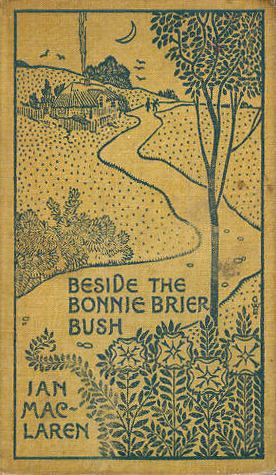 | ||
The Kailyard school of Scottish fiction (1880-1914) was developed in the last decades of the 19th century as a reaction against what was seen as increasingly coarse writing representing Scottish life complete with all its blemishes. It has been considered to be an overly sentimental representation of rural life, cleansed of real problems and issues that affected the people, but proved for a time extremely popular. Its name derives ultimately from the Scots "kailyaird" or "kailyard", which means a small cabbage patch (see kale) or kitchen garden, usually adjacent to a cottage; but more immediately from Ian Maclaren's 1894 book Beside the Bonnie Brier Bush whose title alludes to the Jacobite song "There grows a bonnie brier bush in our Kailyard".
Writers of the Kailyard school included J. M. Barrie, Ian Maclaren, J. J. Bell, George MacDonald, Gabriel Setoun, and S. R. Crockett.
Barrie's Auld Licht Idylls (1888), A Window in Thrums (1889), and The Little Minister (1891); and Crockett's The Stickit Minister (1893) are among the more lasting products of the school.
Opposition
George Douglas Brown aimed his 1901 novel The House with the Green Shutters explicitly against what he called "the sentimental slop" of the Kailyard school.
Much of Hugh MacDiarmid's work, and the Scottish Renaissance associated with him, was a reaction against Kailyardism.
